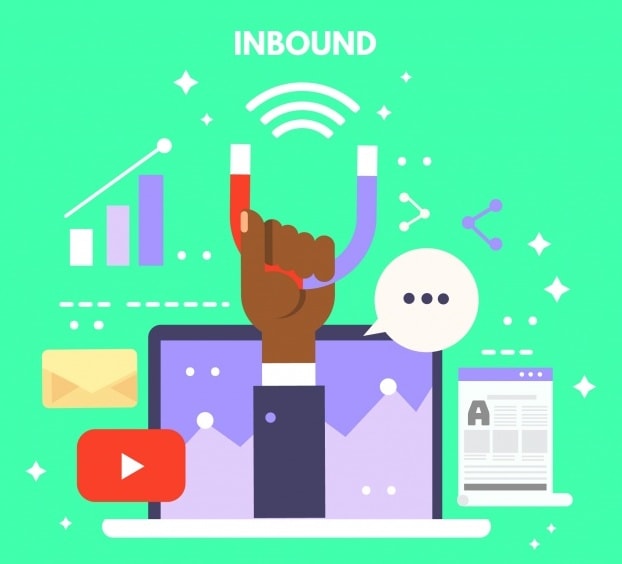Sales methodology is an essential element of the sales process, which is the framework, general tactic, and philosophy that guides the salesperson in each step of the sales process.
Sales methodology is considered as a gap that bridges between what needs to be done and how is it to be accomplished. Goals are turned into small actionable steps with the help of sales methodologies that are measurable and monitored. There are many sales models that can be utilized. Every sales methodology is expected to align with your sales process, but it will not align entirely with the sales cycle.
Usually, sales methodologies are relevant to a single process of the entire sales cycle like the discovery or qualification of the leads. Also, since every company develops the customer sales process, the sales methodology of one company will not work for the other.
Sales methodology also helps your organization to gain customers in the B2B business environment. The model that is chosen will determine your sales process. Since there are many types of selling, all the teams can implement and use different methodologies.
Table of Contents
Following the different types of methodologies
1. Target Account Selling
This sales methodology is one of the most commonly used and is considered ideal for breaking large deals into essential components.
Every representative focuses only on a handful of accounts rather than focusing on multiple opportunities. The idea is to build a strong relationship with each of these accounts so that you can understand their potential, clients’ needs and that information will help you to deliver consistently, and high-quality sales messages till customer conversion happens.
A big assignment in the customer relationship department, marketing, and sales as required for the success of this method. Marketing should focus on reaching the customer researching about them, nurturing the campaigns, and having collaterals for sales teams. Sales will focus on relationship and communication, and customer service will assist for any required support by the customer.
2. The Challenger Sale
According to this method, there are five types of sales representatives:
The problem solver, who is detail-oriented and gets a reliable response from the stakeholders. Ensures that all of the issues are solved.
The hard worker is the one who is self-motivated and does not give up easily. He is interested in feedback as well as personality development.
The Lone Wolf follows his instincts. He delivers results but is very difficult to manage. He is self-assured and then the rest of the types.
The relationship builder is the classic consultative salesperson who creates relationships with prospects and their advocates.
The Challenger is the one who has a strong understanding of the customer’s business and loves to debate and push the customer. He has a different view of the world. Challengers are considered most successful among all types, and they are the ones who get more opportunities in the market.
An analysis shows that more than 38% of performers are categorized under challenger style. Top performers are twice as more likely to use a challenger approach. Only 7% of the top performers used a relationship approach which was the worst-performing profile, and more than half of the high performances fit the challenger profile.
3. SPIN selling
Neil Rackham introduced the concept of SPIN selling. SPIN stands for Situation, Problem, Implication, and Need to pay off. It focuses on all the meaningful conversations with correct questions at the proper stages.
In the situation phase, the salesperson is looking at the current process of the buyer and his available resources and asking him’ currently how do you manage X?’ or ‘Do I understand this correctly?’ These questions can help him prepare to move to the problem phase.
In the problem stage, the objective is to make your client or customer point out his problems. They should take ownership of all the issues and should think about how much are these issues causing trouble. You should collect all the pain points that bother him subconsciously.
In the implication stage, the prospect will be able to see the impact of their problems. In this stage, the questions should not be selfish or blind. They should promote helpfulness with a genuine desire to understand the customer rather than sell. Asking questions like what will happen is helpful in this stage.
At the final stage of the Need-Payoff phase, the customer will recognize and acknowledge the values and benefits of your products by himself. He may even tell you the same before you get an opportunity to explain it.
4. Conceptual Selling
Robert Miller and Stephan Heiman are credited for developing conceptual selling. This model says that customer interactions are very crucial that they should not be left to chance.
The approach is based on the customer focus and communication, which helps the sales teams to prepare better for the time that they spend with a customer. This is expected to result in a fruitful meeting and win-win outcomes. T
his method encourages the sales rep to ask questions, rather than smart questions to the customer. These questions can be categorized into one of the following five categories:
1. Reaffirmation or confirmation question
Example: You are in this business, and you are considering a product to manage your people better and also to hold them accountable. Am I getting it right?
2. New information questions
Example: can you explain to me which problem of yours will the healthcare app solve?
Considering the larger picture, how would that app help you in your daily activities?
3. Attitude questions
These questions try to understand and relate the customer on a personal level but discovering their reason behind the project.
Example: Why was this not addressed before?
4. Commitment Questions
In this, you enquire about their customers’ investment value in the project
Example: how important or urgent is it to you to buy this product? What are the hurdles in going ahead with this project?
5. Basic issue questions
These days potential problems. Example: how are you comfortable with the service cost and set up fees?
5. Value Selling
Rather than focusing on the product or its features, the value selling sales methodology ensures that the value or benefit of your product is delivered and not only the product like a box sale.
Customers do not buy products simply because of the product. They need to understand the value of the product. For example, customers do not buy an expensive phone just because it is made of some brand. They know the features of the product and then buy it.
The price which customers pay is to receive the benefits. The higher the benefits, the more significant is the price. Customers must perceive this product to be valuable, and when the company is successful in establishing the value of the product, then the cost of the product becomes secondary.
The framework of price versus value can be very subjective. Initially, you may require actions to justify the price along with its perceived value.
A lot of research is necessary to find the targets who will purchase your product at your cost and address their needs which makes the solution you are offering vital to them.
6. Inbound selling
The primary difference between inbound and outbound sales is that inbound sales are the ones which come to you and outbound sales are the one which you closed by going out.
Inbound selling is becoming a popular concept with the development of the internet and e-commerce. With the primary goals of sales, marketing strategies are intertwined tightly with the selling process.
With the help of messages and opportunities in inbound selling, they attract customers so that they can engage with the sellers’ company actively.
It does not require a conventional sales-push approach; instead, it pulls the customer towards the product. Inbound sellers utilize data to personalize messages to their leads or customers so that it can lead to a desired action of the sale.
7. SNAP selling
Jill Konrath introduced this technique in 2012. This technique assumes that everybody is present and busy. Their goal is to speed up the sales process by being invaluable, simple, and assigned with the needs of the consumer. It aims to be the priority of the customer. The focus is on getting inside the minds of the customer.
Following is the full form of SNAP:
‘S’imple: make it simple and easy for the prospect to change their existing habits and incorporate your product
‘IN’ valuable: You should be able to present the unique features of your product and make the customer understand the value of your offering.
‘A’ lign: you have to meet people understand why has dining your position with their requirements
‘Priority’: focus to win deals on what prospect is prioritizing
8. Solution Selling
Solution selling is similar to value selling in many aspects since it focuses on solving problems rather than focusing on the product. The solutions are customized products that are presented for customers based on their needs.
For example, an IT company may create customized packages of data service based on the needs of individual customers. Solution selling begins with understanding the pain points of your customer. You have to follow the details of the deal and have a look into the past. You should try to understand the reason which triggered the customer to buy from you.
From this, you can understand and diagnose the issues. The conversation with the customer will focus on their company and requirements and not on the benefits and specifications of your product. You are expected to incorporate similar strategies which you have used during value selling
9. N. E. A. T. Selling
This is the concept of sale based on three different methodologies which are as follows:
BANT: This is a says qualification process that is based on a budget of the prospect. The full form of BANT is Budget, Authority, Need and Timeframe.
ANUM: This is based on the need of the prospect. Authority, Need, Urgency and Money is the full form of ANUM.
AN: AN is Authority and Need.
With the use of all three approaches of AN, ANUM, and BANT, you will be able to find more success in today’s world.
Need, Economic Impact, Access to authority and Timeline is the full form of NEAT selling.
10. Sandler Selling System
This methodology is one of the oldest which is used still today. The Sandler Selling system is the sales methodology that is based on consumer buying behavior versus processes and formulas. When implemented correctly, the customer feels that they are getting a deal which results in a transaction that is less pushy.
The initial contact is more like a talk rather than a sales call. Things like restrictions on budget and time, poverty are exposed in this phase rather than in the sales cycle. Objections should overcome at the first step rather than waiting for the final surprise.
Once the objections are revealed, then the sales representative will have a clear idea of which solution is right for the customer, and he will pitch accordingly.
Following are three stages of the Sandler selling system:
Building and maintaining the relations: selling starts with good relationships with the prospect. You have to show a genuine desire for assistance rather than overcome with the urge to sell the product.
Qualify the prospect: before sales begin, you have to make sure that the prospectors are correctly evaluated and qualified. Every customer will not be the right one for your product which is why you have to find them, separate them, and let the rest of the customers.
Closing the deal: prospects who make past the qualifying stage have an excellent chance of closure. At this stage, you should only focus on the customer objections and pain points rather than other, less meaningful conversations.
This sales methodology can be a big timesaver for many of the sales representatives since it reduces the bad deals very early rather than later in the cycle.
11. MEDDIC
MEDDIC is the abbreviation of Metrics, Economic buyers, Decision criteria, Decision process, Identify pain, and Champion. With the help of MEDDIC, businesses can help their sales teams to be better by assisting them in making a sales plan so that they can close the deal.
With the use of marketing automation, the company will enable its sales representatives to reach every customer directly. This also involves the time which is spent on qualification, reviewing the critical message, and then working with the customer. This methodology is recommended for companies that are interested in tight control of their pipeline.
Although the relevant data and metrics along with quantitative standards, are already established for the qualification of the leads, it requires searching and nurturing for the Champion in the customer which advocates for the brand or product.
Liked this post? Check out the complete series on Sales




